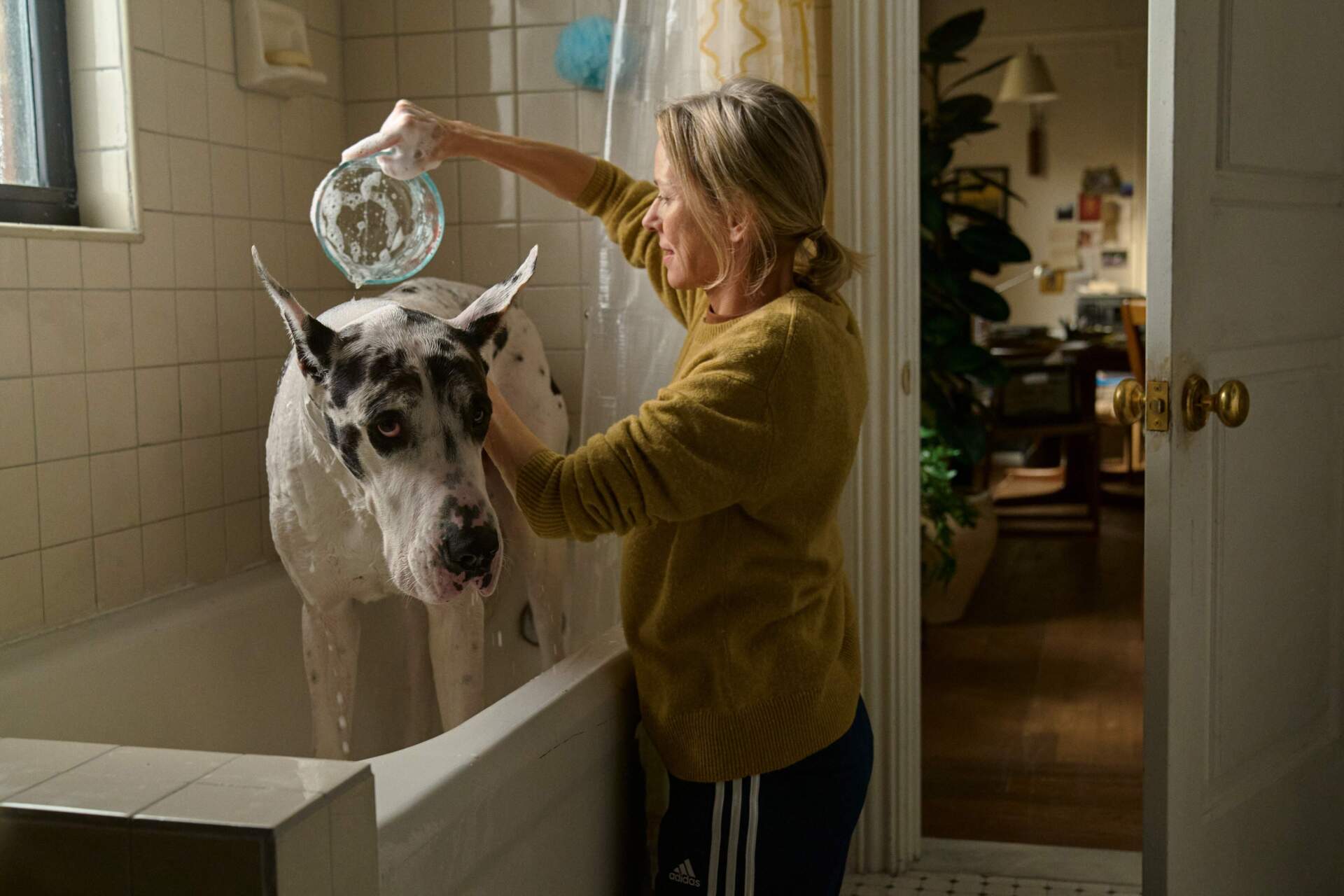I understand how insane it sounds to say that a dog gives a great performance in a movie. We all know that animal acting is mostly a matter of training and strategically timed treats. Yet still, I’ll be damned if Bing — the 150-pound Great Dane playing a depressed dog named Apollo in writer-directors Scott McGehee and David Siegel’s festival favorite “The Friend” — doesn’t deliver some of the film’s most moving moments. With his regal bearing and understated elegance, the noble Apollo will break your heart. And I say this as a cat person.
I think a lot of it has to do with the fact that the movie lets him just be a dog. Most of the time in these animal pictures, the filmmakers try to anthropomorphize man’s best friend, shooting cutesy, sitcom-timed reactions to dialogue scenes like we’re supposed to believe that the dog understands English or something. Not Apollo, who remains distant and alone in his grief for his missing master, uncomprehending and adrift in an unfamiliar place surrounded by strangers. He is a sad dog, with good reason.

Apollo was previously owned by Walter (Bill Murray), a jovial rapscallion and man of letters who has bequeathed the animal to his best friend Iris (Naomi Watts), a creative writing professor and blocked novelist with a tiny Greenwich Village apartment and no idea how to begin taking care of a pet the size of a Subaru. Walter died by suicide, leaving a confused coterie of ex-wives, friends, fans and colleagues trying to pick up the pieces. Walter’s formerly estranged adult daughter Val (Sarah Pidgeon) was already working with Iris on a collection of the literary lion’s correspondence, a project that has picked up considerable urgency since his demise. “Dead Walter is hot,” the late writer’s agent explains.
Into all the shock and sadness arrives Apollo, a free-floating metaphor for the heavy burdens left behind by those who leave us unexpectedly. There’s a bit of the obligatory big dog/little lady slapstick comedy amid a more thoughtful examination of the grieving process. The deliberately vague title “The Friend” could be referring to Apollo, but is more likely a reference to Walter, whose problematic legacy Iris wrestles with throughout the picture. Murray appears in several flashbacks and one powerful fantasy sequence as a towering, convivial figure full of contradictions. It’s a shrewd piece of casting, capitalizing on the actor’s instant rapport with the audience, the life of the party with a faraway sadness in his eyes.
Watts has not been particularly well served by her roles as of late, so it’s a treat to watch her really dig into this one. Iris’ calm, well-ordered existence is upended not just by a large dog, but also her unexamined feelings about her best friend. We learn that Walter was forced to retire from teaching after “allegations,” and that’s not the last example of ungentlemanly behavior to come up in the wake of his passing. Watts shares a honey of a scene with the wonderful actress Carla Gugino — someone we seldom see enough of in movies these days — where the two trace how they were both students and lovers of Walter’s until one became his ex-wife and the other his best friend, each ending up slightly jealous of the other.
McGehee and Siegel have a handsomely glossy shooting style that, in previous pictures like their 2001 neo-noir “The Deep End,” softens the edges of the material with which they’re working. They can be too smooth and airy for their own good, and there’s a level on which “The Friend” is a pretty, conventional crowd-pleaser about a lonely lady learning to love her new dog, with some mildly comic canine antics and a ticking-clock plotline involving Iris’ possible eviction from her “no pets” apartment building. But that’s not what’s interesting about it.
Advertisement

The screenplay was adapted from a novel by Sigrid Nunez, whose “What Are You Going Through” was the basis for Pedro Almodovar’s “The Room Next Door.” (Nunez had quite the New York Film Festival last year, with both pictures premiering on consecutive evenings.) Portions of the book are written in the second person, with Iris directly addressing her deceased mentor, a hybrid style that McGehee and Siegel attempt to translate with varying degrees of effectiveness.
They hit the jackpot during a sequence in which Iris tries to write her own fictionalized confrontation with Walter, allowing Watts and Murray to go toe-to-toe with each doing their strongest work in ages. It’s an incredible scene addressing the messy mysteries of suicide, as well as the crushing disappointment when a friend isn’t everything you wished they would be. Casting Bill Murray adds an extra dimension of the audience’s knowledge about the beloved actor’s own allegations and famously mercurial behavior. (A friend who had a terrible professional experience with him years ago told me he would not be surprised to someday hear that the actor had taken his own life. I thought about that a lot during this movie.)
Iris can’t write a satisfying ending to the chapter, because she realizes she never really understood the person she loved the most in the world. This is the revelation that carries “The Friend” past a few too many treacly false endings, and it’s the smartest thing about the film’s refusal to anthropomorphize Apollo. We might never be able to fully comprehend those we choose to share our lives with. In the end, people are as frustrating, complicated and essentially unknowable as another species altogether. But we can love them.
“The Friend” is now in theaters.
